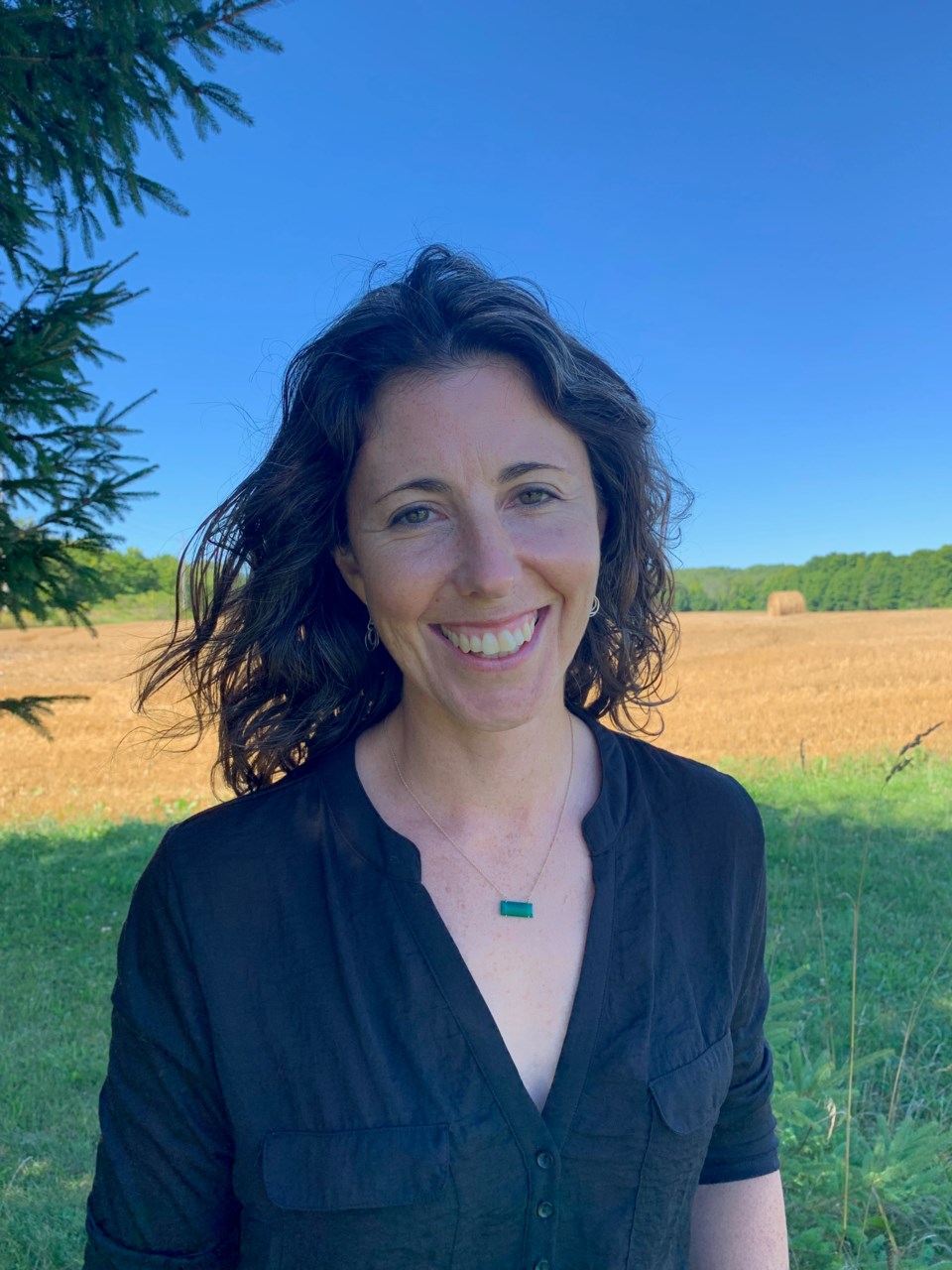Orillia-based scholar Valerie Hébert served as an author and editor for a new book called Framing the Holocaust: Photographs of a Mass Shooting in Latvia, 1941.
The Lakehead University professor is one of eight contributors to the book, which takes a deep dive into 12 photographs that document a mass shooting of Jewish people on a beach in Latvia in December 1941.
“When a lot of people think about the Holocaust, they think of Auschwitz and they think of trains,” Hébert said. “Before the death camps were built, the mass killings began with mobile shooting squads that combed through the Eastern Front as the Nazi army advanced.”
Hébert says the mobile shooting squads would gather alleged racial and political enemies and shoot them to death. More than a million people were killed using this terrorizing tactic.
“These 12 photographs show the sequential steps in one of these shooting actions,” she explained. “Jews were brought to this place, were made to undress. They were separated into smaller groups and brought to a ditch that was dug parallel with the sea, and they were shot. Their bodies fell into the ditch.”
Four men are connected to the photographs, but it’s unknown for sure who took them. The photos were turned in to the Soviet investigators by a Jewish Latvian man and are commonly used today in Holocaust museums but are rarely attributed to the correct time and place.
“This book provides an in-depth study and the historical context for these photos,” Hébert said.
In 2017, Hébert organized a workshop at the United States Holocaust Memorial Museum in Washington, D.C., on atrocity photography.
“Photographs are sort of at the cutting edge of Holocaust research in particular,” she said. “There is more and more interest in this field of atrocity photography.”
She invited scholars from Canada, the U.S., Germany and Australia to the two-week workshop to talk about their work in atrocity photography and to look at materials from the museum.
“The idea was to put together a book where we are all speaking about the same images,” she said. “We chose these 12 photos because it’s rare to have so many in a clear sequence.”
The images show partially clothed and naked women and children caught in moments of terror.
“They really push us to the edge of what it is we can bear to look at,” she said. “The key question of the book is if they are so unbearable to look at, why should we even engage with them? What can we gain from them? And what can they tell us?”
Each author in the book brings a different question to the photos.
For Hébert, studying photos goes back to her childhood. Her interest in history comes from looking through her grandfather’s Time Life coffee table book of photographs from the 20th century.
“From the time I was little, I would look at this book and would be really drawn to photographs,” she said.
Hébert, who has a PhD in history, uses photographs often in her teaching at Lakehead University.
“I’ve taught Holocaust courses, I’ve taught courses on the world wars, and at first I was always uneasy about showing photographs of dead bodies and people in distress,” she said.
“There are some really important questions around these people not giving their consent to be photographed. A lot of times, the photographs are a part of the torture and humiliation because the photographer is using the moment to deepen their suffering.”
Through the process of creating the book, Hébert asked herself if bringing light to the photographs continued the humiliation and horror of victims. She also asked herself if the pictures were important evidence that help people understand history.
“The chapter that I contributed to the book looks at that ethical question,” she said. “Should we look at these? Should we not? And what are the arguments on both sides?”
The chapter sets the stage for all of the following chapters in the book, and Hébert hopes readers who pick up the book will gain a new appreciation for how rich and complex photographs are.
“We have this idea that photographs tell us everything, the truth is on its surface, and we understand everything by looking at the photograph, but we don’t,” she said. “So, it’s really important to consider who took the photograph, who was the intended audience, and what that might mean.”
While the photographs in the book were taken as a celebration of the crime, they’re also an indictment, which makes it important to understand the many meanings photographs hold, Hébert says.
“It helps us think more critically about historical photographs that we see,” she said. “We are a more visual culture now with social media and Instagram. It’s all image based now.”
She says photographs can transcend language, time and geography, which makes it important to have a more critical and nuanced way of understanding pictures while being aware of their ethical complications, which makes people better consumers of present-day photojournalism.
“The ones in the book help us understand this particular event in the Holocaust,” she said. “The way that the authors model how we read and interpret these photographs, there is a lot of crossover to how you may engage in photographs of other historical events or present-day crises and human rights issues.”
Framing the Holocaust: Photographs of a Mass Shooting in Latvia, 1941 will be available for purchase on Amazon starting Aug. 22.



